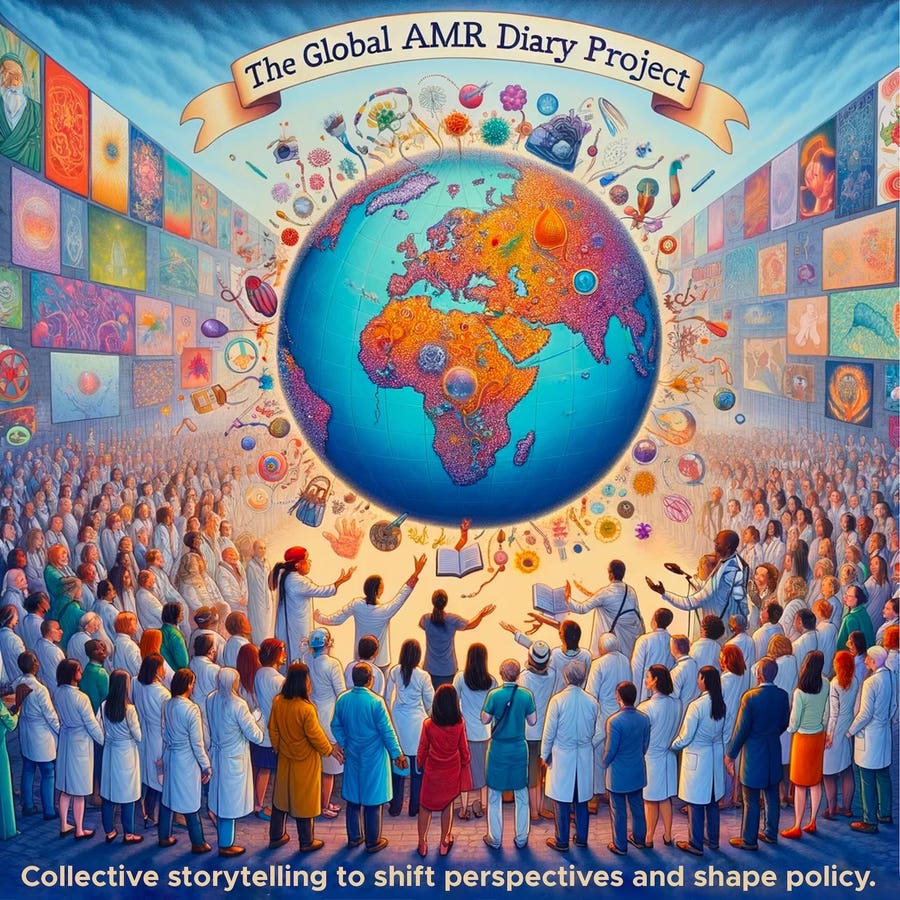Every day, people all around the world die from normally-treatable microbial infection, in numbers that are too high to comprehend.
What do we feel when we hear that antimicrobial resistance was directly responsible for 1.27 million deaths globally in 2019 and contributed to 4.95 million deaths is too abstract and unrelatable. Our minds become numb and can’t grab onto the numbers. It is the same with teaching about the Holocaust—people can’t grasp the magnitude of 6 million Jews—and many Romani, gays, disabled people and political dissidents—being slaughtered. Just as some in Holocaust education have shifted to the power of telling one person’s story, many of those combatting AMR are now doing the same. It makes the impact personal and leaves a lasting impression.
With this in mind, a new project launches today, The Global AMR Diary. The release is linked to the publication of Diary of a Dying Girl by Mallory Smith, who died from a superbug infection in 2017. I wrote about Mallory’s story and the need to develop phage therapy to combat AMR in “Salt in My Soul…”
Mallory’s mother, Diane Shader Smith, has been a relentless advocate for approaching AMR. One of the hurdles she identifies is that there is an “alphabet soup of acronyms” used by different agencies to describe AMR, complicating communication.
Another is that patient stories have been siloed across multiple sites and organizations until now. Why is that happening? How can we overcome this? The Global AMR Diary brings them all together under one roof, that of the Partnership to Fight Infectious Disease. The Global AMR Diary aims to shift perspectives and shape policy around AMR by transforming “the AMR crisis from a distant concept to a relatable and urgent reality.” Smith explained, “We learn more from the voices and experiences of people living and dying from AMR than we do from the bacteria themselves.”
Through her videos and extensive diary, Mallory was articulate in voicing what it was like to live with both cystic fibrosis and the multidrug-resistant bacteria that ultimately killed her. Just as people all over the world know what cancer is, Smith wants the concept and scope of AMR to be as widely understood.
Smith also shares other peoples’ stories to show that “no one is safe.” For example, Katy Granger went to Hawaii on vacation and got a small cut on her thumb. That led to sepsis and her losing her legs and fingertips. Tori Kinamon was an undergraduate gymnast who developed a methicillin-resistant Staph abscess in her thigh that led to multiple surgeries and complications. She subsequently went to Duke Medical School and is also doing infectious disease research.
Kevin Outterson is a law professor at Boston University and the executive director of CARB-X, a global nonprofit accelerator focused on the most dangerous bacteria. He shared additional perspective. And he, too, is focused on helping people understand the magnitude of the problem.
For example, he explained that infection is the second leading cause of death for people with cancer. Further, 28% of the global burden of all diseases is due to infections, and half of that (14% of the global burden) is due to bacterial infections. This is far more than the deaths from mycobacteria (TB), HIV, and malaria combined. From a US-only perspective, the CDC put the burden of infections (2019) as “more than 2.8 million antimicrobial-resistant infections occur in the U.S. each year, and more than 35,000 deaths.” (“Antimicrobial” includes bacteria, viruses, and fungi). The Covid-19 pandemic made all of this worse.
Outterson agrees that studies and reports contain too many stats for people to absorb or make sense of. What he wants is for people to make the connection and to say, “What happened to my loved ones is actually part of the larger problem of bacteria.”
Professor Dame Sally Davies, the UK’s Special Envoy on Antimicrobial Resistance, shared with the AMR community that the goal of the Global Diary is to show, “Behind every statistic is a story – a real person with family and friends who are impacted by the global antibiotic emergency.”
Again, you can read compelling patient experiences at the Global AMR Diary.
Read the full article here






